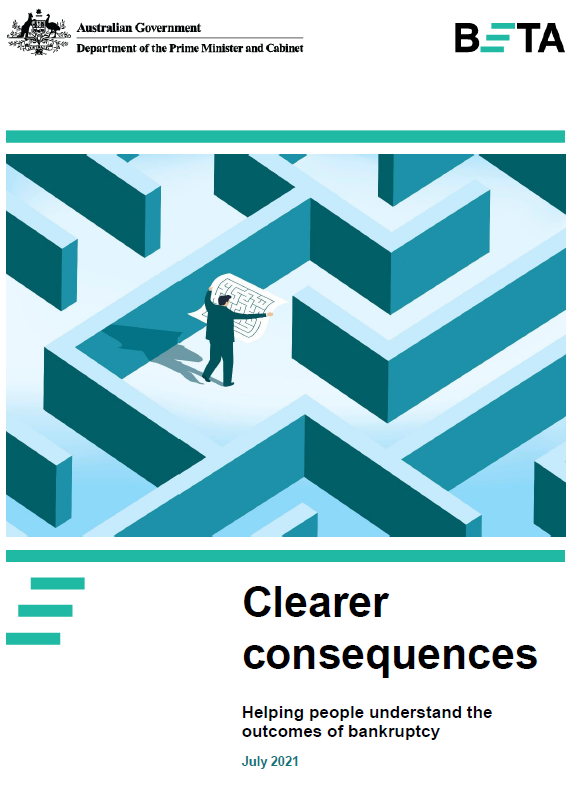BETA partnered with AFSA on two projects to determine how to best communicate about the consequences of bankruptcy.
In the first project, over 6,500 Australians completed one of six educational tools online that explain the consequences of bankruptcy and then assessed their levels of understanding. A pop-quiz and video were most effective, improving people’s understanding by 27 percentage points above the group that saw no educational tool.
In the second project, we introduced five additional prompts into the online bankruptcy application form. For the most part, including the prompts did not influence applicants’ reporting. We also found the best time to inform people about the consequences of bankruptcy is likely to be before they attempt the application form.
These two projects shed light on how the Government can best convey complex information to the public. While prompts or pop-quizzes may not be suitable in all settings, the findings highlight the benefit of developing a variety of approaches and testing what works best.
ADDITIONAL TRIAL INFORMATION
Project 1 - additional trial information
Intervention start and end date:Wednesday, 17 February 2021 to Thursday, 11 March 2021
Ethics approval: Macquarie University, 22 December 2020
Experimental design including randomisation: A seven-arm between-subjects online experiment where participants were randomly assigned to see one of 6 education tools, or no tool at all (control condition). A two-arm randomised controlled trial in the field where participants either saw a version of the application form with additional prompts, or the business-as-usual form (control condition).
Intervention(s): The specific information provided to participants (about the consequences of bankruptcy) was the same in each intervention condition. However, the styles/formatting varied substantially. Two interventions (the Prescribed Information and the Current Consequence tool) are already used by AFSA. The other four interventions included: a video, a roadmap outlining what will happen during and after applying for bankruptcy, a personalised profile showing how bankruptcy is likely to impact the applicant, and a quiz that asked participants to answer bankruptcy related questions before seeing any further bankruptcy information.
Control condition: No information
Outcome(s): The primary outcome was responder’s comprehension of the consequences of bankruptcy, assessed using a 13-question multiple-choice questionnaire administered after the intervention. The secondary outcome measure was participants’ confidence that they understand the consequences of bankruptcy (6-point scale from 0 = not at all confident, to 5 = completely confident).
Expected sample size: Expected 6,000, final sample size was 6,566
Other: This trial was publicly pre-registered on the AEA registry, record number AEARCTR-007302.
Project 2 - additional trial information
Intervention start and end date: Thursday, 1 October 2020 to Friday, 22 January 2021
Ethics approval: Bellberry Human Research Ethics committee (2020-09-891-A-1)
Experimental design including randomisation: A two-arm randomised controlled trial in the field where participants either saw a version of the application form with additional prompts, or the business-as-usual form (control condition).
Intervention(s): The intervention version of the bankruptcy application form included five additional prompts that describe the consequences of bankruptcy. Two of the prompts were static and always visible to the applicant, three prompts were conditional. Prompts noted consequences relating to personal assets, income, and debts not extinguishable by bankruptcy.
Control condition: Current form
Outcome(s): Primary outcomes were: completion rate, number of assets reported, average monetary value of these assets, and total self-reported income.
Expected sample size: Expected: 1,400 submitted forms. Final sample size was 2,339 applicants, for 1,606 submitted forms
Other: This trial was publicly pre-registered on the AEA registry, record number AEARCTR-006534.


